Know-how growth in organic analysis typically goals to both enhance the variety of mobile options that may be surveyed concurrently or improve the decision at which such observations are doable. For many years, stream cytometry has balanced these objectives to fill a vital want by enabling the measurement of a number of options in single cells, generally to look at complicated or hierarchical mobile techniques.
Not too long ago, a format for stream cytometry has been developed that leverages the precision of mass spectrometry. This fusion of the 2 applied sciences, termed mass cytometry, offers measurement of over 40 simultaneous mobile parameters at single-cell decision, considerably augmenting the flexibility of cytometry to judge complicated mobile techniques and processes.
On this Primer, we evaluation the present state of mass cytometry, offering an summary of the instrumentation, its current capabilities, and strategies of knowledge evaluation, in addition to ideas on future developments and purposes.

Mobile, molecular, and tissue-level reactions to orthodontic pressure.
Transforming adjustments in paradental tissues are thought-about important in effecting orthodontic tooth motion. The force-induced tissue pressure produces native alterations in vascularity, in addition to mobile and furthermobile matrix reorganization, resulting in the synthesis and launch of assorted neurotransmitters, cytokines, progress components, colony-stimulating components, and metabolites of arachidonic acid.
Current analysis within the organic foundation of tooth motion has supplied detailed perception into molecular, mobile, and tissue-level reactions to orthodontic forces. Though many research have been reported within the orthodontic and associated scientific literature, a concise convergence of all knowledge remains to be missing.
Such an amalgamation of the quickly accumulating scientific info ought to assist orthodontic clinicians and educators perceive the organic processes that underlie the phenomenon of tooth motion with mechanics (detachable, mounted, or purposeful home equipment). This evaluation goals to realize this objective and is organized to incorporate all main findings from the start of analysis within the biology of tooth motion.
It highlights current developments in mobile, molecular, tissue, and genetic reactions in response to orthodontic pressure utility. It opinions briefly the processes of bone, periodontal ligament, and gingival transforming in response to orthodontic pressure. This evaluation additionally offers perception into the organic background of assorted deleterious results of orthodontic forces.
Molecular chaperones and protein folding in vegetation.
Protein folding in vivo is mediated by an array of proteins that act both as ‘foldases’ or ‘molecular chaperones’. Foldases embrace protein disulfide isomerase and peptidyl prolyl isomerase, which catalyze the rearrangement of disulfide bonds or isomerization of peptide bonds round Professional residues, respectively.
Molecular chaperones are a various group of proteins, however they share the property that they bind substrate proteins which might be in unstable, non-native structural states. One of the best understood chaperone techniques are HSP70/DnaK and HSP60/GroE, however appreciable knowledge assist a chaperone function for different proteins, together with HSP100, HSP90, small HSPs and calnexin.
Current analysis signifies that many, if not all, mobile proteins work together with chaperones and/or foldases throughout their lifetime within the cell. Completely different chaperone and foldase techniques are required for synthesis, focusing on, maturation and degradation of proteins in all mobile compartments.
Thus, these numerous proteins have an effect on an exceptionally broad array of mobile processes required for each regular cell perform and survival of stress situations. This evaluation summarizes our present understanding of how these proteins perform in vegetation, with a serious concentrate on these techniques the place essentially the most detailed mechanistic knowledge can be found, or the place options of the chaperone/foldase system or substrate proteins are distinctive to vegetation.
Position of BRCA1 and BRCA2 as regulators of DNA restore, transcription, and cell cycle in response to DNA injury.
BRCA1 (BReast-CAncer susceptibility gene 1) and BRCA2 are tumor suppressor genes, the mutant phenotypes of which predispose to breast and ovarian cancers. Intensive analysis has proven that BRCA proteins are concerned in a large number of pivotal mobile processes.
Specifically, each genes contribute to DNA restore and transcriptional regulation in response to DNA injury. Current research recommend that BRCA proteins are required for upkeep of chromosomal stability, thereby defending the genome from injury. New knowledge additionally present that BRCAs transcriptionally regulate some genes concerned in DNA restore, the cell cycle, and apoptosis.
Many of those capabilities are mediated by a lot of mobile proteins that work together with BRCAs. The capabilities of BRCA proteins are additionally linked to distinct and particular phosphorylation occasions; nevertheless, the extent to which phosphorylation-activated molecular pathways contribute to tumor suppressor exercise stays unclear.
Lastly, the the reason why mutations in BRCA genes result in the event of breast and ovarian cancers aren’t clearly understood. Elucidation of the exact molecular capabilities of BRCAs is predicted to enhance our understanding of hereditary in addition to sporadic mammary carcinogenesis.
Giant-scale phosphorylation evaluation of alpha-factor-arrested Saccharomyces cerevisiae.
Protein phosphorylation is crucial for quite a few mobile processes. Giant-scale profiling of phosphoproteins continues to reinforce the depth and velocity at which we perceive these processes. The event of efficient phosphoprotein and peptide enrichment methods and enhancements to mass spectrometric instrumentation have intensified phosphoproteomic analysis in recent times, resulting in unprecedented achievements.
Right here, we describe a large-scale phosphorylation evaluation of alpha-factor-arrested yeast. Utilizing a multidimensional separation technique involving preparative SDS-PAGE for prefractionation, in-gel digestion with trypsin, and immobilized steel affinity chromatography (IMAC) enrichment of phosphopeptides, adopted by LC-MS/MS evaluation using a hybrid LTQ-Orbitrap mass spectrometer, we have been capable of catalog a considerable portion of the phosphoproteins current in yeast whole-cell lysate.
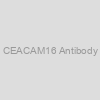 CEACAM16 Antibody |
|||
| DF9343-200ul | Affinity Biosciences | 200ul | EUR 350 |
 CEACAM16 Antibody |
|||
| E19-9343-1 | EnoGene | 50ug/50ul | EUR 145 |
|
Description: Available in various conjugation types. |
|||
 CEACAM16 Antibody |
|||
| E19-9343-2 | EnoGene | 100ug/100ul | EUR 225 |
|
Description: Available in various conjugation types. |
|||
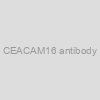 CEACAM16 antibody |
|||
| 70R-6430 | Fitzgerald | 50 ug | EUR 467 |
|
Description: Rabbit polyclonal CEACAM16 antibody raised against the middle region of CEACAM16 |
|||
 CEACAM16 antibody |
|||
| 70R-6445 | Fitzgerald | 50 ug | EUR 467 |
|
Description: Rabbit polyclonal CEACAM16 antibody raised against the middle region of CEACAM16 |
|||
 CEACAM16 Antibody |
|||
| 1-CSB-PA005158LA01HU | Cusabio |
|
|
|
Description: A polyclonal antibody against CEACAM16. Recognizes CEACAM16 from Human. This antibody is Unconjugated. Tested in the following application: ELISA, IHC; Recommended dilution: IHC:1:500-1:1000 |
|||
 CEACAM16 Antibody |
|||
| ABD9343 | Lifescience Market | 100 ug | EUR 525.6 |
 CEACAM16 Antibody |
|||
| GWB-MP966C | GenWay Biotech | 50ug | Ask for price |
 CEACAM16 Antibody |
|||
| GWB-MP967D | GenWay Biotech | 50ug | Ask for price |
 CEACAM16 Polyclonal Antibody |
|||
| A69431 | EpiGentek |
|
|
 CEACAM16 Conjugated Antibody |
|||
| C45854 | SAB | 100ul | EUR 476.4 |
 CEACAM16 Antibody, HRP conjugated |
|||
| 1-CSB-PA005158LB01HU | Cusabio |
|
|
|
Description: A polyclonal antibody against CEACAM16. Recognizes CEACAM16 from Human. This antibody is HRP conjugated. Tested in the following application: ELISA |
|||
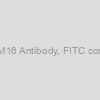 CEACAM16 Antibody, FITC conjugated |
|||
| 1-CSB-PA005158LC01HU | Cusabio |
|
|
|
Description: A polyclonal antibody against CEACAM16. Recognizes CEACAM16 from Human. This antibody is FITC conjugated. Tested in the following application: ELISA |
|||
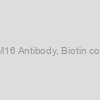 CEACAM16 Antibody, Biotin conjugated |
|||
| 1-CSB-PA005158LD01HU | Cusabio |
|
|
|
Description: A polyclonal antibody against CEACAM16. Recognizes CEACAM16 from Human. This antibody is Biotin conjugated. Tested in the following application: ELISA |
|||
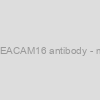 Polyclonal CEACAM16 antibody - middle region |
|||
| APR00944G | Leading Biology | 0.05mg | EUR 633.6 |
|
Description: A polyclonal antibody raised in Rabbit that recognizes and binds to Human CEACAM16 - middle region. This antibody is tested and proven to work in the following applications: |
|||
 Polyclonal CEACAM16 antibody - middle region |
|||
| APR00945G | Leading Biology | 0.05mg | EUR 633.6 |
|
Description: A polyclonal antibody raised in Rabbit that recognizes and binds to Human CEACAM16 - middle region. This antibody is tested and proven to work in the following applications: |
|||
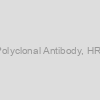 CEACAM16 Polyclonal Antibody, HRP Conjugated |
|||
| A69432 | EpiGentek |
|
|
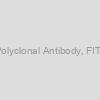 CEACAM16 Polyclonal Antibody, FITC Conjugated |
|||
| A69433 | EpiGentek |
|
|
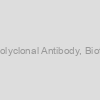 CEACAM16 Polyclonal Antibody, Biotin Conjugated |
|||
| A69434 | EpiGentek |
|
|
 ARP44864_P050-25UL - CEACAM16 Antibody - middle region |
|||
| ARP44864_P050-25UL | Aviva Systems Biology | 25ul | EUR 99 |
 ARP44865_P050-25UL - CEACAM16 Antibody - middle region |
|||
| ARP44865_P050-25UL | Aviva Systems Biology | 25ul | EUR 99 |
) ARP44864_P050 - CEACAM16 antibody - middle region (ARP44864_P050) |
|||
| ARP44864_P050 | Aviva Systems Biology | 100ul | EUR 389 |
) ARP44865_P050 - CEACAM16 antibody - middle region (ARP44865_P050) |
|||
| ARP44865_P050 | Aviva Systems Biology | 100ul | EUR 389 |
 CEACAM16 siRNA |
|||
| 20-abx911377 | Abbexa |
|
|
 CEACAM16 siRNA |
|||
| 20-abx911378 | Abbexa |
|
|
 CEACAM16 mouse monoclonal antibody, clone SU-9D5, Purified |
|||
| AM32984PU-N | Origene Technologies GmbH | 100 µg | Ask for price |
 - Rat carcinoembryonic antigen-related cell adhesion molecule 16 (Ceacam16)) Ceacam16 (untagged) - Rat carcinoembryonic antigen-related cell adhesion molecule 16 (Ceacam16) |
|||
| RN216640 | Origene Technologies GmbH | 10 µg | Ask for price |
 CEACAM16 Blocking Peptide |
|||
| 33R-9368 | Fitzgerald | 100 ug | EUR 119 |
|
Description: A synthetic peptide for use as a blocking control in assays to test for specificity of CEACAM16 antibody, catalog no. 70R-6430 |
|||
 CEACAM16 Blocking Peptide |
|||
| 33R-5191 | Fitzgerald | 100 ug | EUR 119 |
|
Description: A synthetic peptide for use as a blocking control in assays to test for specificity of CEACAM16 antibody, catalog no. 70R-6445 |
|||
 CEACAM16 Blocking Peptide |
|||
| DF9343-BP | Affbiotech | 1mg | EUR 234 |
-Human carcinoembryonic antigen-related cell adhesion molecule 16 (CEACAM16)) CEACAM16 (untagged)-Human carcinoembryonic antigen-related cell adhesion molecule 16 (CEACAM16) |
|||
| SC310891 | Origene Technologies GmbH | 10 µg | Ask for price |
 - Mouse carcinoembryonic antigen-related cell adhesion molecule 16 (Ceacam16), (10ug)) Ceacam16 (untagged) - Mouse carcinoembryonic antigen-related cell adhesion molecule 16 (Ceacam16), (10ug) |
|||
| MC214587 | Origene Technologies GmbH | 10 µg | Ask for price |
 - Human carcinoembryonic antigen-related cell adhesion molecule 16 (CEACAM16)) CEACAM16 (GFP-tagged) - Human carcinoembryonic antigen-related cell adhesion molecule 16 (CEACAM16) |
|||
| RG224965 | Origene Technologies GmbH | 10 µg | Ask for price |
 Human CEACAM16 ELISA KIT |
|||
| ELI-33840h | Lifescience Market | 96 Tests | EUR 988.8 |
 Antibody) Carcinoembryonic Antigen Related Cell Adhesion Molecule 16 (CEACAM16) Antibody |
|||
| 20-abx149186 | Abbexa |
|
|
 Antibody) Carcinoembryonic Antigen Related Cell Adhesion Molecule 16 (CEACAM16) Antibody |
|||
| 20-abx334413 | Abbexa |
|
|
 Antibody) Carcinoembryonic Antigen Related Cell Adhesion Molecule 16 (CEACAM16) Antibody |
|||
| abx334413-100g | Abbexa | 100 µg | EUR 362.5 |
 Antibody) Carcinoembryonic Antigen Related Cell Adhesion Molecule 16 (CEACAM16) Antibody |
|||
| abx334413-20g | Abbexa | 20 µg | EUR 162.5 |
 Antibody) Carcinoembryonic Antigen Related Cell Adhesion Molecule 16 (CEACAM16) Antibody |
|||
| abx334413-50g | Abbexa | 50 µg | EUR 250 |
 Mouse CEACAM16 shRNA Plasmid |
|||
| 20-abx983617 | Abbexa |
|
|
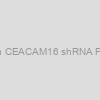 Human CEACAM16 shRNA Plasmid |
|||
| 20-abx967805 | Abbexa |
|
|
 - Rat carcinoembryonic antigen-related cell adhesion molecule 16 (Ceacam16)) Ceacam16 (myc-DDK-tagged) - Rat carcinoembryonic antigen-related cell adhesion molecule 16 (Ceacam16) |
|||
| RR216640 | Origene Technologies GmbH | 10 µg | Ask for price |
 - Mouse carcinoembryonic antigen-related cell adhesion molecule 16 (Ceacam16)) Ceacam16 (Myc-DDK-tagged) - Mouse carcinoembryonic antigen-related cell adhesion molecule 16 (Ceacam16) |
|||
| MR212682 | Origene Technologies GmbH | 10 µg | Ask for price |
 - Mouse carcinoembryonic antigen-related cell adhesion molecule 16 (Ceacam16), (10ug)) Ceacam16 (GFP-tagged) - Mouse carcinoembryonic antigen-related cell adhesion molecule 16 (Ceacam16), (10ug) |
|||
| MG212682 | Origene Technologies GmbH | 10 µg | Ask for price |
-Human carcinoembryonic antigen-related cell adhesion molecule 16 (CEACAM16)) CEACAM16 (Myc-DDK-tagged)-Human carcinoembryonic antigen-related cell adhesion molecule 16 (CEACAM16) |
|||
| RC224965 | Origene Technologies GmbH | 10 µg | Ask for price |
 Antibody (HRP)) Carcinoembryonic Antigen Related Cell Adhesion Molecule 16 (CEACAM16) Antibody (HRP) |
|||
| 20-abx334977 | Abbexa |
|
|
 Antibody (HRP)) Carcinoembryonic Antigen Related Cell Adhesion Molecule 16 (CEACAM16) Antibody (HRP) |
|||
| abx334977-100g | Abbexa | 100 µg | EUR 362.5 |
 Antibody (HRP)) Carcinoembryonic Antigen Related Cell Adhesion Molecule 16 (CEACAM16) Antibody (HRP) |
|||
| abx334977-20g | Abbexa | 20 µg | EUR 162.5 |
 Antibody (HRP)) Carcinoembryonic Antigen Related Cell Adhesion Molecule 16 (CEACAM16) Antibody (HRP) |
|||
| abx334977-50g | Abbexa | 50 µg | EUR 250 |
) CEACAM16 Recombinant Protein (Rat) |
|||
| RP194447 | ABM | 100 ug | Ask for price |
 Antibody (FITC)) Carcinoembryonic Antigen Related Cell Adhesion Molecule 16 (CEACAM16) Antibody (FITC) |
|||
| 20-abx334978 | Abbexa |
|
|
 Antibody (FITC)) Carcinoembryonic Antigen Related Cell Adhesion Molecule 16 (CEACAM16) Antibody (FITC) |
|||
| abx334978-100g | Abbexa | 100 µg | EUR 362.5 |
 Antibody (FITC)) Carcinoembryonic Antigen Related Cell Adhesion Molecule 16 (CEACAM16) Antibody (FITC) |
|||
| abx334978-20g | Abbexa | 20 µg | EUR 162.5 |
 Antibody (FITC)) Carcinoembryonic Antigen Related Cell Adhesion Molecule 16 (CEACAM16) Antibody (FITC) |
|||
| abx334978-50g | Abbexa | 50 µg | EUR 250 |
) CEACAM16 Recombinant Protein (Human) |
|||
| RP051580 | ABM | 100 ug | Ask for price |
) CEACAM16 Recombinant Protein (Mouse) |
|||
| RP123317 | ABM | 100 ug | Ask for price |
 Antibody (Biotin)) Carcinoembryonic Antigen Related Cell Adhesion Molecule 16 (CEACAM16) Antibody (Biotin) |
|||
| 20-abx334979 | Abbexa |
|
|
 Antibody (Biotin)) Carcinoembryonic Antigen Related Cell Adhesion Molecule 16 (CEACAM16) Antibody (Biotin) |
|||
| abx334979-100g | Abbexa | 100 µg | EUR 362.5 |
 Antibody (Biotin)) Carcinoembryonic Antigen Related Cell Adhesion Molecule 16 (CEACAM16) Antibody (Biotin) |
|||
| abx334979-20g | Abbexa | 20 µg | EUR 162.5 |
 Antibody (Biotin)) Carcinoembryonic Antigen Related Cell Adhesion Molecule 16 (CEACAM16) Antibody (Biotin) |
|||
| abx334979-50g | Abbexa | 50 µg | EUR 250 |
 (pORF)) Ceacam16 ORF Vector (Rat) (pORF) |
|||
| ORF064817 | ABM | 1.0 ug DNA | EUR 607.2 |
 (pORF)) CEACAM16 ORF Vector (Human) (pORF) |
|||
| ORF017194 | ABM | 1.0 ug DNA | Ask for price |
 (pORF)) Ceacam16 ORF Vector (Mouse) (pORF) |
|||
| ORF041107 | ABM | 1.0 ug DNA | EUR 607.2 |
 Human CEACAM16 knockout cell line |
|||
| ABC-KH2886 | AcceGen | 1 vial | Ask for price |
|
Description: Human CEACAM16 knockout cell line is HEK293/HeLa cell line, edited by CRISPR/Cas9 technology. |
|||
 Human CEACAM16 knockdown cell line |
|||
| ABC-KD2886 | AcceGen | 1 vial | Ask for price |
|
Description: Human CEACAM16 knockdown cell line is engineered by our optimized transduction of the specific shRNA with lentivirus. Knockdown levels are determined via qRT-PCR. Gentaur offers generation of stable knockdown (RNAi) cell lines expressing shRNAs targeting genes of your interest. |
|||
 Human CEACAM16 Protein Lysate 20ug |
|||
| IHUCEACAM16PLLY20UG | Innovative research | each | EUR 361 |
|
Description: Human CEACAM16 Protein Lysate 20ug |
|||
 - Mouse carcinoembryonic antigen-related cell adhesion molecule 16 (Ceacam16)) Lenti ORF clone of Ceacam16 (mGFP-tagged) - Mouse carcinoembryonic antigen-related cell adhesion molecule 16 (Ceacam16) |
|||
| MR212682L4 | Origene Technologies GmbH | 10 µg | Ask for price |
 OCOA15797-20UG - CEACAM16 Protein Lysate |
|||
| OCOA15797-20UG | Aviva Systems Biology | 20ug | EUR 269 |
 - Mouse carcinoembryonic antigen-related cell adhesion molecule 16 (Ceacam16)) Lenti ORF clone of Ceacam16 (Myc-DDK-tagged) - Mouse carcinoembryonic antigen-related cell adhesion molecule 16 (Ceacam16) |
|||
| MR212682L3 | Origene Technologies GmbH | 10 µg | Ask for price |
 CEACAM16 3'UTR GFP Stable Cell Line |
|||
| TU054162 | ABM | 1.0 ml | EUR 1672.8 |
 Ceacam16 3'UTR GFP Stable Cell Line |
|||
| TU252140 | ABM | 1.0 ml | Ask for price |
 Ceacam16 3'UTR GFP Stable Cell Line |
|||
| TU153680 | ABM | 1.0 ml | Ask for price |
) Ceacam16 sgRNA CRISPR Lentivector set (Rat) |
|||
| K6081701 | ABM | 3 x 1.0 ug | EUR 406.8 |
) CEACAM16 sgRNA CRISPR Lentivector set (Human) |
|||
| K0427101 | ABM | 3 x 1.0 ug | EUR 406.8 |
) Ceacam16 sgRNA CRISPR Lentivector set (Mouse) |
|||
| K3357601 | ABM | 3 x 1.0 ug | EUR 406.8 |
 - Mouse carcinoembryonic antigen-related cell adhesion molecule 16 (Ceacam16), 200ul, >10^7 TU/mL) Lenti ORF particles, Ceacam16 (GFP-tagged) - Mouse carcinoembryonic antigen-related cell adhesion molecule 16 (Ceacam16), 200ul, >10^7 TU/mL |
|||
| MR212682L4V | Origene Technologies GmbH | 200 µl | Ask for price |
 (pPM-C-HA)) CEACAM16 Protein Vector (Rat) (pPM-C-HA) |
|||
| PV259268 | ABM | 500 ng | EUR 723.6 |
 (pPB-C-His)) CEACAM16 Protein Vector (Rat) (pPB-C-His) |
|||
| PV259266 | ABM | 500 ng | EUR 723.6 |
 (pPB-N-His)) CEACAM16 Protein Vector (Rat) (pPB-N-His) |
|||
| PV259267 | ABM | 500 ng | EUR 723.6 |
 (pPM-C-His)) CEACAM16 Protein Vector (Rat) (pPM-C-His) |
|||
| PV259269 | ABM | 500 ng | EUR 723.6 |
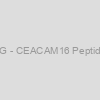 AAP44864-100UG - CEACAM16 Peptide - middle region |
|||
| AAP44864-100UG | Aviva Systems Biology | 100ug | EUR 99 |
 AAP44865-100UG - CEACAM16 Peptide - middle region |
|||
| AAP44865-100UG | Aviva Systems Biology | 100ug | EUR 99 |
 (pPM-C-HA)) CEACAM16 Protein Vector (Human) (pPM-C-HA) |
|||
| PV068775 | ABM | 500 ng | Ask for price |
 (pPM-C-HA)) CEACAM16 Protein Vector (Mouse) (pPM-C-HA) |
|||
| PV164428 | ABM | 500 ng | EUR 723.6 |
 - Human carcinoembryonic antigen-related cell adhesion molecule 16 (CEACAM16), 200ul, >10^7 TU/mL) Lenti ORF particles, CEACAM16 (mGFP-tagged) - Human carcinoembryonic antigen-related cell adhesion molecule 16 (CEACAM16), 200ul, >10^7 TU/mL |
|||
| RC224965L2V | Origene Technologies GmbH | 200 µl | Ask for price |
 - Human carcinoembryonic antigen-related cell adhesion molecule 16 (CEACAM16), 200ul, >10^7 TU/mL) Lenti ORF particles, CEACAM16 (mGFP-tagged) - Human carcinoembryonic antigen-related cell adhesion molecule 16 (CEACAM16), 200ul, >10^7 TU/mL |
|||
| RC224965L4V | Origene Technologies GmbH | 200 µl | Ask for price |
 (pPB-C-His)) CEACAM16 Protein Vector (Human) (pPB-C-His) |
|||
| PV068773 | ABM | 500 ng | Ask for price |
 (pPB-N-His)) CEACAM16 Protein Vector (Human) (pPB-N-His) |
|||
| PV068774 | ABM | 500 ng | Ask for price |
 (pPM-C-His)) CEACAM16 Protein Vector (Human) (pPM-C-His) |
|||
| PV068776 | ABM | 500 ng | Ask for price |
 (pPB-C-His)) CEACAM16 Protein Vector (Mouse) (pPB-C-His) |
|||
| PV164426 | ABM | 500 ng | EUR 723.6 |
 (pPB-N-His)) CEACAM16 Protein Vector (Mouse) (pPB-N-His) |
|||
| PV164427 | ABM | 500 ng | EUR 723.6 |
 (pPM-C-His)) CEACAM16 Protein Vector (Mouse) (pPM-C-His) |
|||
| PV164429 | ABM | 500 ng | EUR 723.6 |
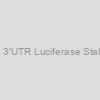 CEACAM16 3'UTR Luciferase Stable Cell Line |
|||
| TU004162 | ABM | 1.0 ml | EUR 1672.8 |
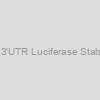 Ceacam16 3'UTR Luciferase Stable Cell Line |
|||
| TU202140 | ABM | 1.0 ml | Ask for price |
 Ceacam16 3'UTR Luciferase Stable Cell Line |
|||
| TU103680 | ABM | 1.0 ml | Ask for price |
 - Mouse carcinoembryonic antigen-related cell adhesion molecule 16 (Ceacam16), 200ul, >10^7 TU/mL) Lenti ORF particles, Ceacam16 (Myc-DDK-tagged) - Mouse carcinoembryonic antigen-related cell adhesion molecule 16 (Ceacam16), 200ul, >10^7 TU/mL |
|||
| MR212682L3V | Origene Technologies GmbH | 200 µl | Ask for price |
 - Human carcinoembryonic antigen-related cell adhesion molecule 16 (CEACAM16), 200ul, >10^7 TU/mL) Lenti ORF particles, CEACAM16 (Myc-DDK tagged) - Human carcinoembryonic antigen-related cell adhesion molecule 16 (CEACAM16), 200ul, >10^7 TU/mL |
|||
| RC224965L1V | Origene Technologies GmbH | 200 µl | Ask for price |
 - Human carcinoembryonic antigen-related cell adhesion molecule 16 (CEACAM16), 200ul, >10^7 TU/mL) Lenti ORF particles, CEACAM16 (Myc-DDK tagged) - Human carcinoembryonic antigen-related cell adhesion molecule 16 (CEACAM16), 200ul, >10^7 TU/mL |
|||
| RC224965L3V | Origene Technologies GmbH | 200 µl | Ask for price |
 (Target 1)) Ceacam16 sgRNA CRISPR Lentivector (Rat) (Target 1) |
|||
| K6081702 | ABM | 1.0 ug DNA | EUR 184.8 |
 (Target 2)) Ceacam16 sgRNA CRISPR Lentivector (Rat) (Target 2) |
|||
| K6081703 | ABM | 1.0 ug DNA | EUR 184.8 |
 (Target 3)) Ceacam16 sgRNA CRISPR Lentivector (Rat) (Target 3) |
|||
| K6081704 | ABM | 1.0 ug DNA | EUR 184.8 |
 (Target 1)) CEACAM16 sgRNA CRISPR Lentivector (Human) (Target 1) |
|||
| K0427102 | ABM | 1.0 ug DNA | EUR 184.8 |
 (Target 2)) CEACAM16 sgRNA CRISPR Lentivector (Human) (Target 2) |
|||
| K0427103 | ABM | 1.0 ug DNA | EUR 184.8 |
 (Target 3)) CEACAM16 sgRNA CRISPR Lentivector (Human) (Target 3) |
|||
| K0427104 | ABM | 1.0 ug DNA | EUR 184.8 |
 (Target 1)) Ceacam16 sgRNA CRISPR Lentivector (Mouse) (Target 1) |
|||
| K3357602 | ABM | 1.0 ug DNA | EUR 184.8 |
 (Target 2)) Ceacam16 sgRNA CRISPR Lentivector (Mouse) (Target 2) |
|||
| K3357603 | ABM | 1.0 ug DNA | EUR 184.8 |
 (Target 3)) Ceacam16 sgRNA CRISPR Lentivector (Mouse) (Target 3) |
|||
| K3357604 | ABM | 1.0 ug DNA | EUR 184.8 |
 (CMV) (pLenti-GIII-CMV)) CEACAM16 Lentiviral Vector (Rat) (CMV) (pLenti-GIII-CMV) |
|||
| LV651535 | ABM | 1.0 ug DNA | EUR 818.4 |
 (UbC) (pLenti-GIII-UbC)) CEACAM16 Lentiviral Vector (Rat) (UbC) (pLenti-GIII-UbC) |
|||
| LV651539 | ABM | 1.0 ug DNA | EUR 818.4 |
 (EF1a) (pLenti-GIII-EF1a)) CEACAM16 Lentiviral Vector (Rat) (EF1a) (pLenti-GIII-EF1a) |
|||
| LV651540 | ABM | 1.0 ug DNA | EUR 818.4 |
 CEACAM3 / CEACAM6 Antibody |
|||
| 20-abx323361 | Abbexa |
|
|
 CEACAM3/CEACAM6 Antibody |
|||
| 1-CSB-PA006209 | Cusabio |
|
|
|
Description: A polyclonal antibody against CEACAM3/CEACAM6. Recognizes CEACAM3/CEACAM6 from Human. This antibody is Unconjugated. Tested in the following application: WB, ELISA;WB:1/500-1/2000.ELISA:1/10000 |
|||
 CEACAM3 / CEACAM6 Antibody |
|||
| abx323361-100g | Abbexa | 100 µg | EUR 250 |
 CEACAM3 / CEACAM6 Antibody |
|||
| abx323361-50g | Abbexa | 50 µg | EUR 187.5 |
 - 3 unique 27mer siRNA duplexes - 2 nmol each) Ceacam16 (Mouse) - 3 unique 27mer siRNA duplexes - 2 nmol each |
|||
| SR414123 | Origene Technologies GmbH | 2 nmol | Ask for price |
 - 3 unique 27mer siRNA duplexes - 2 nmol each) CEACAM16 (Human) - 3 unique 27mer siRNA duplexes - 2 nmol each |
|||
| SR317990 | Origene Technologies GmbH | 2 nmol | Ask for price |
) Ceacam16 sgRNA CRISPR/Cas9 All-in-One Lentivector set (Rat) |
|||
| K6081705 | ABM | 3 x 1.0 ug | EUR 451.2 |
) CEACAM16 sgRNA CRISPR/Cas9 All-in-One Lentivector set (Human) |
|||
| K0427105 | ABM | 3 x 1.0 ug | EUR 451.2 |
) Ceacam16 sgRNA CRISPR/Cas9 All-in-One Lentivector set (Mouse) |
|||
| K3357605 | ABM | 3 x 1.0 ug | EUR 451.2 |
 CEACAM20 Antibody |
|||
| ABD13043 | Lifescience Market | 100 ug | EUR 525.6 |
 CEACAM19 Antibody |
|||
| 45855-100ul | SAB | 100ul | EUR 302.4 |
 CEACAM19 Antibody |
|||
| 45855-50ul | SAB | 50ul | EUR 224.4 |
 CEACAM20 Antibody |
|||
| 45856-100ul | SAB | 100ul | EUR 302.4 |
 CEACAM20 Antibody |
|||
| 45856-50ul | SAB | 50ul | EUR 224.4 |
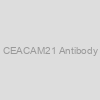 CEACAM21 Antibody |
|||
| 34553 | SAB | 100ul | EUR 319 |
 CEACAM21 Antibody |
|||
| 34553-100ul | SAB | 100ul | EUR 302.4 |
 CEACAM21 Antibody |
|||
| 34553-50ul | SAB | 50ul | EUR 224.4 |
 CEACAM21 Antibody |
|||
| 35679 | SAB | 100ul | EUR 319 |
 CEACAM21 Antibody |
|||
| 35679-100ul | SAB | 100ul | EUR 302.4 |
 CEACAM21 Antibody |
|||
| CSB-PA942626- | Cusabio | each | EUR 402 |
|
Description: A polyclonal antibody against CEACAM21. Recognizes CEACAM21 from Human. This antibody is Unconjugated. Tested in the following application: ELISA, WB;WB:1:500-1:3000 |
|||
 CEACAM21 Antibody |
|||
| CSB-PA942626-100ul | Cusabio | 100ul | EUR 379.2 |
|
Description: A polyclonal antibody against CEACAM21. Recognizes CEACAM21 from Human. This antibody is Unconjugated. Tested in the following application: ELISA, WB;WB:1:500-1:3000 |
|||
 CEACAM21 Antibody |
|||
| 1-CSB-PA959823 | Cusabio |
|
|
|
Description: A polyclonal antibody against CEACAM21. Recognizes CEACAM21 from Human. This antibody is Unconjugated. Tested in the following application: ELISA, IHC;ELISA:1:2000-1:5000, IHC:1:50-1:200 |
|||
 CEACAM21 Antibody |
|||
| E034553 | EnoGene | 100μg/100μl | EUR 255 |
|
Description: Available in various conjugation types. |
|||
 CEACAM21 Antibody |
|||
| E035679 | EnoGene | 100μg/100μl | EUR 255 |
|
Description: Available in various conjugation types. |
|||
 CEACAM21 Antibody |
|||
| E11-14974C | EnoGene | 100μg | EUR 225 |
|
Description: Available in various conjugation types. |
|||
 CEACAM19 Antibody |
|||
| DF9344 | Affbiotech | 200ul | EUR 420 |
 CEACAM19 Antibody |
|||
| DF9344-100ul | Affinity Biosciences | 100ul | EUR 280 |
 CEACAM19 Antibody |
|||
| DF9344-200ul | Affinity Biosciences | 200ul | EUR 350 |
 CEACAM20 Antibody |
|||
| DF9345 | Affbiotech | 200ul | EUR 420 |
 CEACAM20 Antibody |
|||
| DF9345-100ul | Affinity Biosciences | 100ul | EUR 280 |
 CEACAM20 Antibody |
|||
| DF9345-200ul | Affinity Biosciences | 200ul | EUR 350 |
 CEACAM21 Antibody |
|||
| DF3903 | Affbiotech | 200ul | EUR 420 |
 CEACAM21 Antibody |
|||
| DF3903-100ul | Affinity Biosciences | 100ul | EUR 280 |
 CEACAM21 Antibody |
|||
| DF3903-200ul | Affinity Biosciences | 200ul | EUR 350 |
 CEACAM21 Antibody |
|||
| E38PA3449 | EnoGene | 100ul | EUR 225 |
|
Description: Available in various conjugation types. |
|||
 CEACAM21 Antibody |
|||
| E313346 | EnoGene | 100ug/200ul | EUR 295 |
|
Description: Available in various conjugation types. |
|||
 CEACAM21 Antibody |
|||
| E309870 | EnoGene | 200ul | EUR 275 |
|
Description: Available in various conjugation types. |
|||
 CEACAM19 Antibody |
|||
| E19-9344-1 | EnoGene | 50ug/50ul | EUR 145 |
|
Description: Available in various conjugation types. |
|||
 CEACAM19 Antibody |
|||
| E19-9344-2 | EnoGene | 100ug/100ul | EUR 225 |
|
Description: Available in various conjugation types. |
|||
 CEACAM20 Antibody |
|||
| E19-9345-1 | EnoGene | 50ug/50ul | EUR 145 |
|
Description: Available in various conjugation types. |
|||
 CEACAM20 Antibody |
|||
| E19-9345-2 | EnoGene | 100ug/100ul | EUR 225 |
|
Description: Available in various conjugation types. |
|||
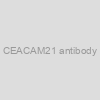 CEACAM21 antibody |
|||
| 70R-16345 | Fitzgerald | 50 ul | EUR 289 |
|
Description: Rabbit polyclonal CEACAM21 antibody |
|||
 CEACAM21 antibody |
|||
| 70R-36669 | Fitzgerald | 100 ug | EUR 294 |
|
Description: Rabbit Polyclonal CEACAM21 antibody |
|||
 CEACAM21 antibody |
|||
| 70R-51768 | Fitzgerald | 100 ul | EUR 242 |
|
Description: Purified Polyclonal CEACAM21 antibody |
|||
 CEACAM19 antibody |
|||
| 70R-6300 | Fitzgerald | 50 ug | EUR 467 |
|
Description: Rabbit polyclonal CEACAM19 antibody raised against the middle region of CEACAM19 |
|||
 CEACAM21 Antibody |
|||
| 1-CSB-PA005162GA01HU | Cusabio |
|
|
|
Description: A polyclonal antibody against CEACAM21. Recognizes CEACAM21 from Human. This antibody is Unconjugated. Tested in the following application: ELISA, WB, IF |
|||
 CEACAM19 Antibody |
|||
| ABD9344 | Lifescience Market | 100 ug | EUR 525.6 |
 CEACAM20 Antibody |
|||
| ABD9345 | Lifescience Market | 100 ug | EUR 525.6 |
 CEACAM21 Antibody |
|||
| ABD3903 | Lifescience Market | 100 ug | EUR 525.6 |
 CEACAM21 Antibody |
|||
| 1-CSB-PA070204 | Cusabio |
|
|
|
Description: A polyclonal antibody against CEACAM21. Recognizes CEACAM21 from Human. This antibody is Unconjugated. Tested in the following application: WB, ELISA;WB:1/500-1/2000.ELISA:1/10000 |
|||
 CEACAM19 Antibody |
|||
| GWB-MR525C | GenWay Biotech | 50ug | Ask for price |
 ELISA kit) Rat Carcinoembryonic antigen related cell adhesion molecule 16(CEACAM16) ELISA kit |
|||
| E01A11836 | BlueGene | 96T | EUR 700 |
|
Description: ELISA |
|||
 ELISA kit) Rat Carcinoembryonic antigen related cell adhesion molecule 16(CEACAM16) ELISA kit |
|||
| E02C1591-192T | BlueGene | 192 tests | EUR 1524 |
|
Description: A competitive ELISA for quantitative measurement of Rat Carcinoembryonic antigen related cell adhesion molecule 16(CEACAM16) in samples from blood, plasma, serum, cell culture supernatant and other biological fluids. This is a high quality ELISA kit developped for optimal performance with samples from the particular species. |
|||
 ELISA kit) Rat Carcinoembryonic antigen related cell adhesion molecule 16(CEACAM16) ELISA kit |
|||
| E02C1591-48 | BlueGene | 1 plate of 48 wells | EUR 624 |
|
Description: A competitive ELISA for quantitative measurement of Rat Carcinoembryonic antigen related cell adhesion molecule 16(CEACAM16) in samples from blood, plasma, serum, cell culture supernatant and other biological fluids. This is a high quality ELISA kit developped for optimal performance with samples from the particular species. |
|||
 ELISA kit) Rat Carcinoembryonic antigen related cell adhesion molecule 16(CEACAM16) ELISA kit |
|||
| E02C1591-96 | BlueGene | 1 plate of 96 wells | EUR 822 |
|
Description: A competitive ELISA for quantitative measurement of Rat Carcinoembryonic antigen related cell adhesion molecule 16(CEACAM16) in samples from blood, plasma, serum, cell culture supernatant and other biological fluids. This is a high quality ELISA kit developped for optimal performance with samples from the particular species. |
|||
 ELISA kit) Pig Carcinoembryonic antigen related cell adhesion molecule 16(CEACAM16) ELISA kit |
|||
| E07C1591-192T | BlueGene | 192 tests | EUR 1524 |
|
Description: A competitive ELISA for quantitative measurement of Porcine Carcinoembryonic antigen related cell adhesion molecule 16(CEACAM16) in samples from blood, plasma, serum, cell culture supernatant and other biological fluids. This is a high quality ELISA kit developped for optimal performance with samples from the particular species. |
|||
 ELISA kit) Pig Carcinoembryonic antigen related cell adhesion molecule 16(CEACAM16) ELISA kit |
|||
| E07C1591-48 | BlueGene | 1 plate of 48 wells | EUR 624 |
|
Description: A competitive ELISA for quantitative measurement of Porcine Carcinoembryonic antigen related cell adhesion molecule 16(CEACAM16) in samples from blood, plasma, serum, cell culture supernatant and other biological fluids. This is a high quality ELISA kit developped for optimal performance with samples from the particular species. |
|||
 ELISA kit) Pig Carcinoembryonic antigen related cell adhesion molecule 16(CEACAM16) ELISA kit |
|||
| E07C1591-96 | BlueGene | 1 plate of 96 wells | EUR 822 |
|
Description: A competitive ELISA for quantitative measurement of Porcine Carcinoembryonic antigen related cell adhesion molecule 16(CEACAM16) in samples from blood, plasma, serum, cell culture supernatant and other biological fluids. This is a high quality ELISA kit developped for optimal performance with samples from the particular species. |
|||
 ELISA kit) Dog Carcinoembryonic antigen related cell adhesion molecule 16(CEACAM16) ELISA kit |
|||
| E08C1591-192T | BlueGene | 192 tests | EUR 1524 |
|
Description: A competitive ELISA for quantitative measurement of Canine Carcinoembryonic antigen related cell adhesion molecule 16(CEACAM16) in samples from blood, plasma, serum, cell culture supernatant and other biological fluids. This is a high quality ELISA kit developped for optimal performance with samples from the particular species. |
|||
 ELISA kit) Dog Carcinoembryonic antigen related cell adhesion molecule 16(CEACAM16) ELISA kit |
|||
| E08C1591-48 | BlueGene | 1 plate of 48 wells | EUR 624 |
|
Description: A competitive ELISA for quantitative measurement of Canine Carcinoembryonic antigen related cell adhesion molecule 16(CEACAM16) in samples from blood, plasma, serum, cell culture supernatant and other biological fluids. This is a high quality ELISA kit developped for optimal performance with samples from the particular species. |
|||
 ELISA kit) Dog Carcinoembryonic antigen related cell adhesion molecule 16(CEACAM16) ELISA kit |
|||
| E08C1591-96 | BlueGene | 1 plate of 96 wells | EUR 822 |
|
Description: A competitive ELISA for quantitative measurement of Canine Carcinoembryonic antigen related cell adhesion molecule 16(CEACAM16) in samples from blood, plasma, serum, cell culture supernatant and other biological fluids. This is a high quality ELISA kit developped for optimal performance with samples from the particular species. |
|||
 ELISA Kit) Rat Carcinoembryonic Antigen Related Cell Adhesion Molecule 16 (CEACAM16) ELISA Kit |
|||
| abx506087-96tests | Abbexa | 96 tests | EUR 687.5 |
 ELISA kit) Goat Carcinoembryonic antigen related cell adhesion molecule 16(CEACAM16) ELISA kit |
|||
| E01A46748 | BlueGene | 96T | EUR 700 |
|
Description: ELISA |
|||
 ELISA kit) Mouse Carcinoembryonic antigen related cell adhesion molecule 16(CEACAM16) ELISA kit |
|||
| E01A20577 | BlueGene | 96T | EUR 700 |
|
Description: ELISA |
|||
 ELISA kit) Human Carcinoembryonic antigen related cell adhesion molecule 16(CEACAM16) ELISA kit |
|||
| E01A3076 | BlueGene | 96T | EUR 700 |
|
Description: ELISA |
|||
 ELISA kit) Mouse Carcinoembryonic antigen related cell adhesion molecule 16(CEACAM16) ELISA kit |
|||
| E03C1591-192T | BlueGene | 192 tests | EUR 1524 |
|
Description: A competitive ELISA for quantitative measurement of Mouse Carcinoembryonic antigen related cell adhesion molecule 16(CEACAM16) in samples from blood, plasma, serum, cell culture supernatant and other biological fluids. This is a high quality ELISA kit developped for optimal performance with samples from the particular species. |
|||
 ELISA kit) Mouse Carcinoembryonic antigen related cell adhesion molecule 16(CEACAM16) ELISA kit |
|||
| E03C1591-48 | BlueGene | 1 plate of 48 wells | EUR 624 |
|
Description: A competitive ELISA for quantitative measurement of Mouse Carcinoembryonic antigen related cell adhesion molecule 16(CEACAM16) in samples from blood, plasma, serum, cell culture supernatant and other biological fluids. This is a high quality ELISA kit developped for optimal performance with samples from the particular species. |
|||
 ELISA kit) Mouse Carcinoembryonic antigen related cell adhesion molecule 16(CEACAM16) ELISA kit |
|||
| E03C1591-96 | BlueGene | 1 plate of 96 wells | EUR 822 |
|
Description: A competitive ELISA for quantitative measurement of Mouse Carcinoembryonic antigen related cell adhesion molecule 16(CEACAM16) in samples from blood, plasma, serum, cell culture supernatant and other biological fluids. This is a high quality ELISA kit developped for optimal performance with samples from the particular species. |
|||
 ELISA kit) Sheep Carcinoembryonic antigen related cell adhesion molecule 16(CEACAM16) ELISA kit |
|||
| E01A99042 | BlueGene | 96T | EUR 700 |
|
Description: ELISA |
|||
 ELISA kit) Human Carcinoembryonic antigen related cell adhesion molecule 16(CEACAM16) ELISA kit |
|||
| E01C1591-192T | BlueGene | 192 tests | EUR 1524 |
|
Description: A competitive ELISA for quantitative measurement of Human Carcinoembryonic antigen related cell adhesion molecule 16(CEACAM16) in samples from blood, plasma, serum, cell culture supernatant and other biological fluids. This is a high quality ELISA kit developped for optimal performance with samples from the particular species. |
|||
 ELISA kit) Human Carcinoembryonic antigen related cell adhesion molecule 16(CEACAM16) ELISA kit |
|||
| E01C1591-48 | BlueGene | 1 plate of 48 wells | EUR 624 |
|
Description: A competitive ELISA for quantitative measurement of Human Carcinoembryonic antigen related cell adhesion molecule 16(CEACAM16) in samples from blood, plasma, serum, cell culture supernatant and other biological fluids. This is a high quality ELISA kit developped for optimal performance with samples from the particular species. |
|||
 ELISA kit) Human Carcinoembryonic antigen related cell adhesion molecule 16(CEACAM16) ELISA kit |
|||
| E01C1591-96 | BlueGene | 1 plate of 96 wells | EUR 822 |
|
Description: A competitive ELISA for quantitative measurement of Human Carcinoembryonic antigen related cell adhesion molecule 16(CEACAM16) in samples from blood, plasma, serum, cell culture supernatant and other biological fluids. This is a high quality ELISA kit developped for optimal performance with samples from the particular species. |
|||
 ELISA kit) Goat Carcinoembryonic antigen related cell adhesion molecule 16(CEACAM16) ELISA kit |
|||
| E06C1591-192T | BlueGene | 192 tests | EUR 1524 |
|
Description: A competitive ELISA for quantitative measurement of Goat Carcinoembryonic antigen related cell adhesion molecule 16(CEACAM16) in samples from blood, plasma, serum, cell culture supernatant and other biological fluids. This is a high quality ELISA kit developped for optimal performance with samples from the particular species. |
|||
 ELISA kit) Goat Carcinoembryonic antigen related cell adhesion molecule 16(CEACAM16) ELISA kit |
|||
| E06C1591-48 | BlueGene | 1 plate of 48 wells | EUR 624 |
|
Description: A competitive ELISA for quantitative measurement of Goat Carcinoembryonic antigen related cell adhesion molecule 16(CEACAM16) in samples from blood, plasma, serum, cell culture supernatant and other biological fluids. This is a high quality ELISA kit developped for optimal performance with samples from the particular species. |
|||
This evaluation yielded the assured identification of 2288 nonredundant phosphorylation websites from 985 proteins. The anomaly rating (Ascore) algorithm was utilized to find out the knowledge of website localization for the whole knowledge set. As well as, the scale of the knowledge set permitted extraction of identified and novel kinase motifs utilizing the Motif-X algorithm. Lastly, a lot of members of the pheromone signaling pathway have been discovered as phosphoproteins and are mentioned.

